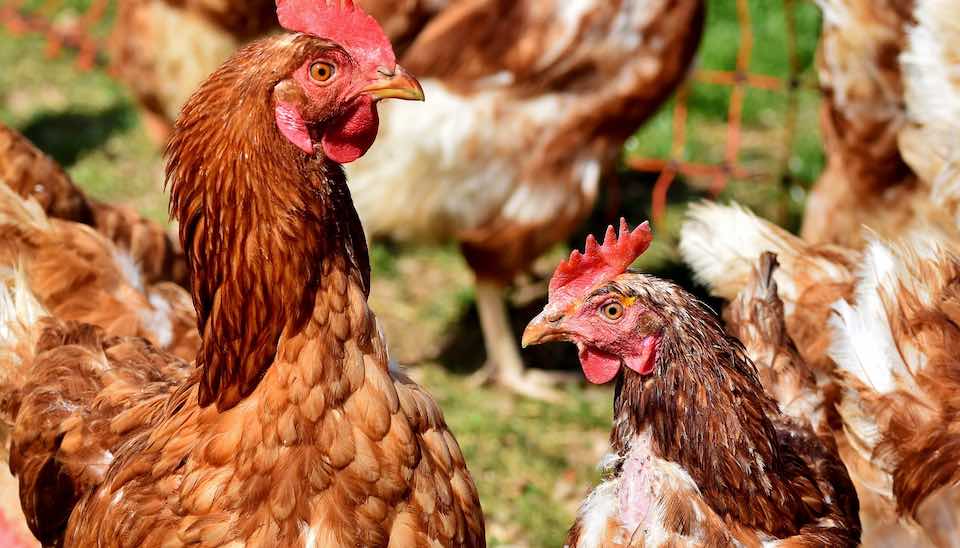Should you adopt a chicken?
Adopting Chickens – Everything you need to know about rescue hens
So you’re thinking about getting chickens, or maybe adding to your flock?
There are plenty of different ways that you can get chickens. You can check out our handy guide to buying chickens here.
But some people choose to adopt a chicken.
How do you adopt a chicken?
There are few different types of chickens available for adoption:
Adopt a chicken from the RSPCA
Sometimes chickens can be adopted from the RSPCA or a similar organisation. These chickens were usually someone’s backyard flock. Sometimes their owners have had to give them up, sometimes they were dumped and occasionally the RSPCA has rescued them from neglect.
Adopt a chicken from a free-range farm
Some free-range egg producers put their hens up for adoption when they are 2-3 years old. These hens may live outdoors on pasture in medium-sized flocks. They are no longer suitable for a commercial operation but usually lay plenty of eggs for a backyard flock.
Adopting these chickens (or buying them) is helping to support a business that is doing the right thing by their animals by finding them good homes. These hens are usually no different to a backyard hen of the same age.
Adopt a rescue hen
More and more groups are offering rescue hens for adoption. But what is a rescue hen?
Rescue hens really have been rescued. They usually come from commercial egg farms, often battery or cage-egg farms. They are either killed outright or occasionally sold for meat at around 2 years of age.
Because of the poor living conditions, genuine rescue hens often have issues that other hens don't.
Why should I adopt a hen?
The older a hen is, the fewer eggs she lays and the bigger they are. This causes issues for commercial egg producers, so laying hens are sold or culled at around 2 years of age.
Adopting a chicken from a farm or rescue group is an opportunity to give a hen a long, happy life that she might not have had otherwise. It is very special to be able to give an ex-battery hen the opportunity to see sunlight, walk on grass or dust-bathe for the first time.
Will a rescue hen still lay eggs?
Most rescue hens will continue to lay eggs for many years.
Hens from good farms where they have been looked after well and lived in free-range conditions tend to lay more reliably. Rescue hens from battery farms are often physically depleted and may not lay very much at all, although the majority do still produce eggs.
For an average backyard chicken keeper, a rescue hen will lay plenty of eggs. But if saving money is your only motivation for keeping chickens, then a point-of-lay bird is probably a better choice for you.
As a guide, all chickens are most productive in their first 2 years. After that, even your backyard chickens will produce fewer eggs, although the eggs will be bigger. Healthy 3 to 4 year-old hens will continue laying at 60-90% capacity. For a commercial breed hen, 60 % capacity still equates to around 4 eggs a week. There are also some tricks that can help older hens keep laying.
What problems do rescue hens have?
A hen that lived in good conditions won’t be any different from a backyard chicken of the same age. You can tell if your chickens lived in good conditions when you pick them up or by talking to the rescue group.
Rescue hens from battery farms and other big operations often have a range of health problems. Ex-battery hens have not had the opportunity to express normal chicken behaviours. Most have never been outdoors, seen sunlight, dust-bathed or scratched in the dirt. They are used to living in very cramped conditions with thousands of hens and many have been debeaked, which affects their mood and ability to interact.
Rescue hens from poor living conditions may have the following problems:
- Feather loss or poor feathering due to feather pecking or stress
- Skin issues and parasites from not dust-bathing
- Leg and foot problems due to little exercise, including the inability to perch
- Medular bone fractures and other bone issues due to calcium deficiency
- Reproductive issues due to intensive laying
- Behavioural issues, particularly in debeaked birds, including feather pecking
Caring for a rescue hen
Rescue hens often require special care and treatment. However, most of the information below applies to ex-battery hens and other commercial settings. Hens from a free-range farm are unlikely to need such specialised care.
Health
You should treat rescue hens for parasites, if needed. It is also good to give them a calcium boost and plenty of protein to help with feathering. Probiotics can also be helpful.
Feed and water
It is important that rescue hens remain on a diet of a commercial, pelleted feed. They will find it difficult to adjust if you change to a scratch mix, even a complete one, or another sub-standard feed, and this may affect egg production over the long-term.
Scraps and treats should be introduced gradually and in very small amounts to begin with. It is important to remember that these hens will never have eaten anything besides feed!
Like any new chicken, rescue hens may need to be taught to use the Feeder or Waterer.
Roosting
Rescue hens may not have perched and you should show them the roosts. However, many are unable to perch due to leg weakness or bone issues. Provide a flat surface around the same height as the other roosts for your rescue hens. This will discourage them from sleeping in the nesting boxes.
Rescue hens often find it difficult to get up and down from high roosts and nesting boxes. They are also more likely to injure themselves with a hard landing if they do jump, making them more susceptible to bumblefoot and fractures.
Provide easy access to roosts and nesting boxes, and don’t make them too high if that is an option. Provide plenty of clear space for jumping down and a nice, soft surface for landing.
Free-ranging
Rescue hens usually adapt well to free-ranging. But it is best to introduce them to a small area first to prevent them from wandering. If you have cars or predators like eagles or hawks, you may also need to teach your hens to avoid them.
Commercial laying hens are exposed to light for 16 hours a day to stimulate laying. They are definitely not used to having to find their own way home to roost at the end of the day. Be prepared to have to find your chickens and put them into the coop at dark for the first few weeks of free-ranging, even if they are joining a well-trained flock!
Behaviour
Because ex-battery hens are used to living in such unnatural conditions – in massive groups and with little space or opportunity to express natural behaviours – they can have behavioural issues.
Rescue hens may not understand correct hen behaviour and can attract attacks or bullying if they fail to show submissiveness. While chickens usually need to sort out the pecking order on their own, it is important to monitor rescue hens and intervene if one just isn’t understanding the requirements.
Rescue hens may be bullies or they may be easy targets for bullying. Ensure birds have somewhere to escape to and watch your flocks’ interactions carefully for the first few days. Be particularly aware of birds that have been debeaked.
Introducing a rescue hen to your flock
Always introduce rescue hens to your flock in groups. Never introduce one bird on its own.
You should always quarantine new birds before you introduce them to your flock. While biosecurity on poultry farms is generally tight, rescue hens can carry disease and they are also more susceptible to any illnesses your chickens may carry.
Use the quarantine period to get your rescue hens used to interacting with you and coming to you. This is also an opportunity to teach them about roosting, foraging and dust-bathing, and to watch for problem behaviours.
To prevent bullying, always wait until your hens are fully feathered, unless they aren’t feathering, to introduce them to your flock. This reduces bullying, as raw skin is a typical attractant to chickens and is easily damaged by pecking.
Although they can be more work and lay fewer eggs, there is something very wonderful about offering rescue hens the chance to experience a normal, chicken life.
Happy chicken keeping!
Rachael at Dine a Chook Australia







